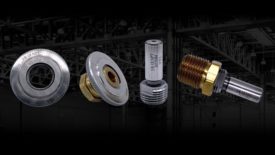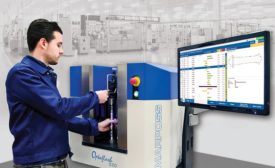Home » thread inspection
Articles Tagged with ''thread inspection''
Test & Inspection
Gaging systems can fundamentally be categorized into three groups.
Read More
Quality 101
Taper Pipe Thread Inspection, NPT
If you take care of your gages, they will take care of you and the parts you manufacture.
March 2, 2023
Gages for Screw Thread Inserts (STI)
It is critical for both the gage manufacturer and the metrology lab to know the industry standard for the gages being manufactured or calibrated.
November 2, 2020
Calibrating Standard Threaded Gages
Applications requiring threaded parts come with a variety of performance requirements.
May 1, 2020
Thread Classes and Setting Plug Gages
Product tolerances and dimensions always dictate the gage tolerances and dimensions.
October 1, 2019
Thread Basics: Go / No-Go Acceptance
It can be beneficial for manufacturing companies to offer thread specific training to both machinists and quality personnel.
January 1, 2018
Stay in the know with Quality’s comprehensive coverage of
the manufacturing and metrology industries.
eNewsletter | Website | eMagazine
JOIN TODAY!Copyright ©2025. All Rights Reserved BNP Media.
Design, CMS, Hosting & Web Development :: ePublishing










